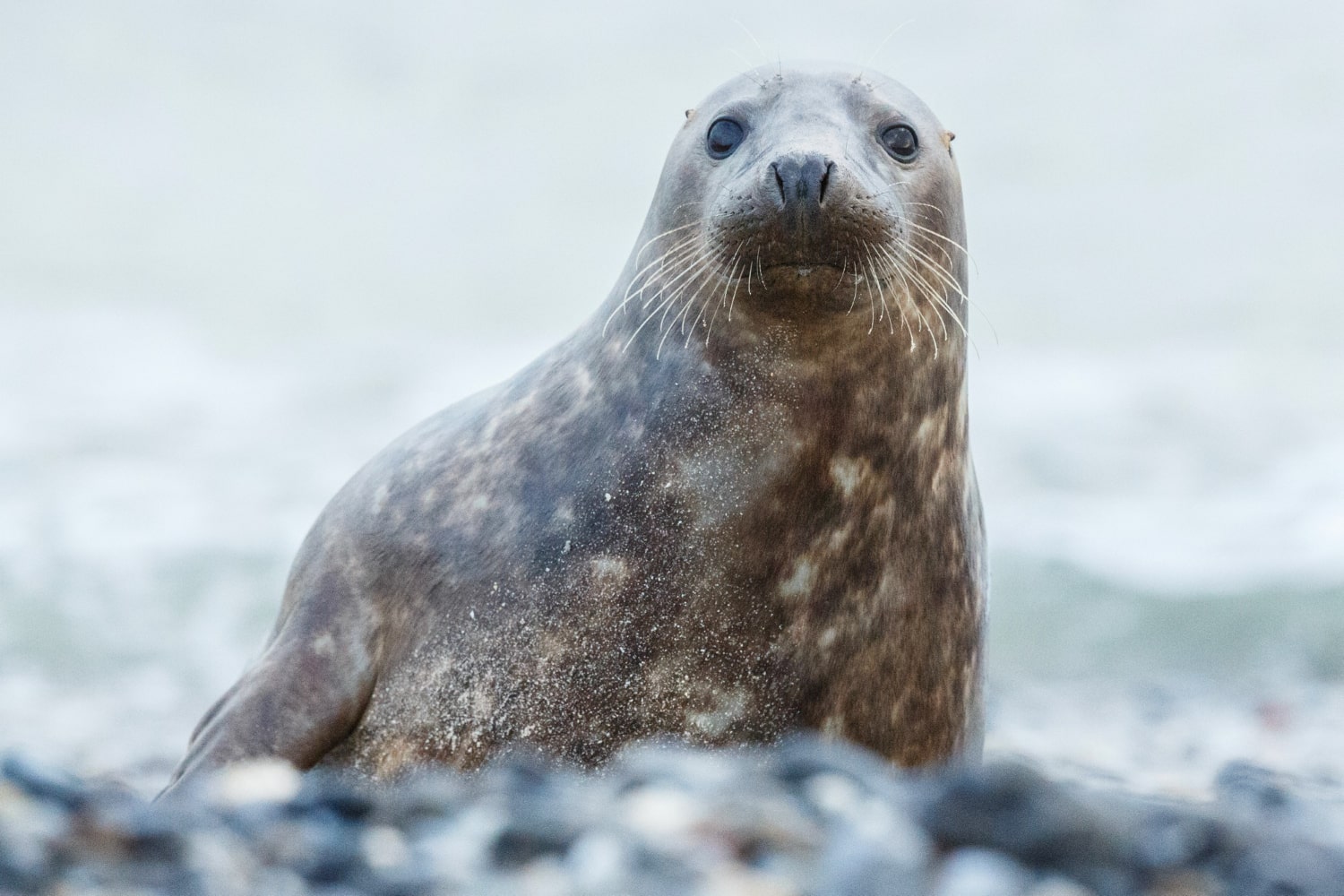Seals are remarkable marine mammals that inhabit cold and temperate waters across the globe. Their graceful movement in water, contrasted with their clumsiness on land, as well as their complex social behavior, fascinates researchers and nature enthusiasts alike. These animals play an essential role in marine ecosystems and are a significant subject of study in biology, ecology, and oceanography. Interesting facts about seals help us better understand their habits, adaptations, and importance in nature. Below is a collection of fascinating facts about these extraordinary creatures that you may not have known.
- Seals belong to the order of carnivorous mammals and form the family of true seals. Unlike sea lions and walruses, they do not have external ear flaps, and their hind flippers do not rotate forward, making them less agile on land. Their streamlined bodies, however, make them excellent swimmers.
- Seals have dense fur and a thick layer of blubber beneath their skin that insulates them in icy waters. This blubber also serves as an energy reserve during long dives or fasting periods. It is especially well developed in Arctic species such as the harp seal.
- Seals possess exceptional hearing, particularly underwater, where it helps them navigate and hunt. Although they lack external ears, their inner hearing organs are highly adapted to detecting sound waves. They can perceive ultrasonic signals that are beyond human hearing range.
- Most seals can hold their breath for extended periods, staying underwater for 30 minutes or more. This ability is supported by a slowed heart rate, restricted blood flow to extremities, and high levels of myoglobin in their muscles. Some species, like the Weddell seal, can dive to depths exceeding 600 meters.
- Seals communicate using sounds, facial expressions, and body movements. During mating season, males often produce loud calls or perform display behaviors to attract females. Some species are even capable of limited echolocation.
- Female seals usually give birth to one pup per year and feed it with highly fatty milk. The pups grow rapidly because the mother’s milk can contain up to 50 percent fat. Most newborns are covered in white fluffy fur, which is later replaced by adult coat.
- During molting season, seals spend more time on land while their bodies renew their fur. This process demands a lot of energy, and during this time seals may eat less or stop feeding altogether. Molting occurs once a year and lasts several weeks.
- Seals feed mainly on fish, squid, crustaceans, and other marine animals. They use their whiskers as sensors to detect the movement of prey even in complete darkness. Their jaws are highly flexible, allowing them to swallow large prey without chewing.
- Some species of seals have adapted to life on ice and can create breathing holes in frozen surfaces. They maintain these openings using their claws or teeth to ensure access to air. This behavior is crucial in polar environments such as the Arctic and Antarctic.
- Seals have excellent memory and learning ability, which has been demonstrated in captive studies. They can be trained to perform complex tasks, recognize objects, follow commands, and identify symbols. This proves a high level of cognitive development.
- There are over 30 species of seals, each with its own unique behavior, physiology, and range. Among the most well-known are the harp seal, crabeater seal, monk seal, and Caspian seal. Each species has adapted to specific environmental conditions.
- The Caspian seal is the only seal species that inhabits a closed sea — the Caspian Sea. Its population has declined significantly due to industrial pollution and climate change. It is a clear example of how environmental threats impact marine wildlife.
- In many cultures, seals hold mythological significance, particularly among the Inuit and Scandinavian peoples. They are often depicted as magical beings capable of taking human form or influencing the fate of fishermen. These legends reflect both reverence and fear of the sea.
- Despite their friendly appearance, seals can be dangerous, especially in the wild. Adult males may aggressively defend their territory and show hostility toward intruders. It is not advisable for humans to approach wild seals, even if they appear calm.
- Seals play a vital role in maintaining ecological balance in marine environments. They help regulate populations of fish and invertebrates, preventing overpopulation of certain species. This contributes to the stability of the food web.
These interesting facts about seals demonstrate how diverse and well-adapted these marine mammals are to harsh environments. They combine strength and endurance, intelligence and sociability, elegance in the water and awkwardness on land. Learning about such animals helps us better understand the natural world and our responsibility to protect it. Seals truly deserve our attention, respect, and conservation efforts.





